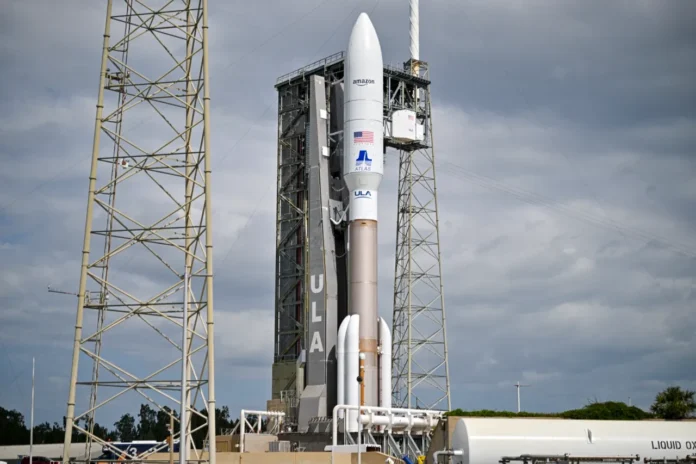The space-based internet competition reached a new phase as Amazon successfully deployed its inaugural Project Kuiper satellites on April 28, 2025. A United Launch Alliance Atlas V rocket carried 27 advanced broadband satellites into low Earth orbit (LEO) from Florida’s Cape Canaveral, initiating Amazon’s ambitious plan to build a 3,236-satellite constellation by 2029. This $10 billion initiative directly challenges SpaceX’s Starlink network, which currently operates over 8,000 satellites.
The New Space Internet Race
SpaceX’s Starlink has dominated the satellite internet market since 2019, providing service to 2+ million users. Amazon’s Kuiper constellation aims to differentiate itself through deep integration with Amazon Web Services (AWS) cloud infrastructure and consumer-friendly terminal designs. However, industry analysts note Kuiper satellites will orbit at 370-390 miles altitude compared to Starlink’s 340-mile orbits, creating potential differences in network latency and coverage patterns.
Regulatory Timelines and Launch Partnerships
Amazon faces a critical FCC deadline requiring 1,618 satellites operational by July 2026. To achieve this, the company has booked 77 heavy-lift missions using multiple rocket providers:
- United Launch Alliance’s Vulcan Centaur
- Arianespace’s Ariane 6
- Blue Origin’s New Glenn
- SpaceX’s Falcon 9 (for select launches)
This diversified approach aims to mitigate risks from any single provider’s potential delays.
Technical Specifications and Testing
The newly launched Kuiper models feature:
- Advanced phased-array antennas for ground communication
- Infrared-reflective coatings to reduce visibility
- Autonomous collision-avoidance systems
- Built-in deorbiting mechanisms for end-of-life disposal
Amazon previously tested two prototype satellites in 2023, successfully achieving 400 Mbps speeds during trials before safely deorbiting.
Market Strategy and Challenges
Project Kuiper targets three primary markets:
- Residential broadband in remote areas
- Mobile connectivity for shipping/aviation
- Government/enterprise solutions via AWS
However, SpaceX’s aggressive Starlink launch pace (60+ satellites weekly) and existing customer base present significant market entry barriers. Amazon plans counter this by offering lower-cost terminals and AWS-powered edge computing services.
Environmental and Scientific Concerns
The rapid expansion of satellite mega-constellations has raised alarms among astronomers and environmentalists. Amazon addresses these concerns through:
- DarkSat technology to reduce reflectivity
- Automated space traffic management systems
- Partnerships with astronomical organizations
- Commitment to deorbit satellites within 355 days of retirement
Future Outlook
While Amazon’s entry intensifies competition, analysts question whether the company can close Starlink’s 5-year head start. Key factors will include launch reliability, customer acquisition costs, and the ability to deliver promised 400 Mbps speeds consistently. The outcome could determine whether space-based internet becomes a two-player market or if late entrants can still secure meaningful market share.
Conclusion
Amazon’s first operational Kuiper launch marks a critical milestone in the commercialization of low Earth orbit. As the constellation grows, consumers stand to benefit from increased competition, while policymakers face new challenges in managing orbital traffic and ensuring equitable global access. The success of Project Kuiper will depend on Amazon’s execution speed and ability to innovate beyond Starlink’s existing framework.



